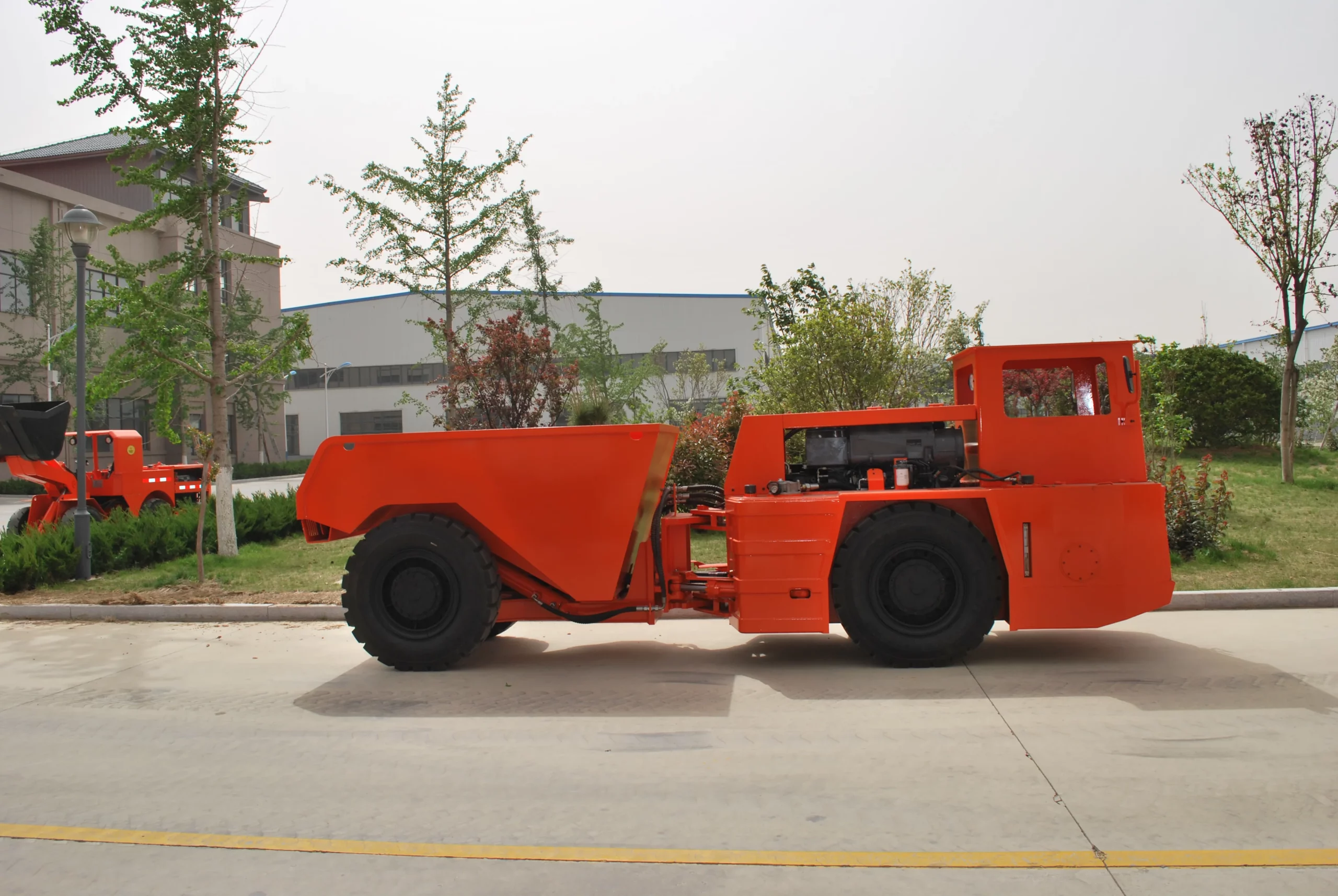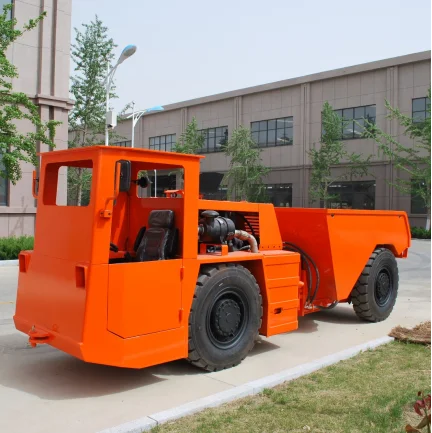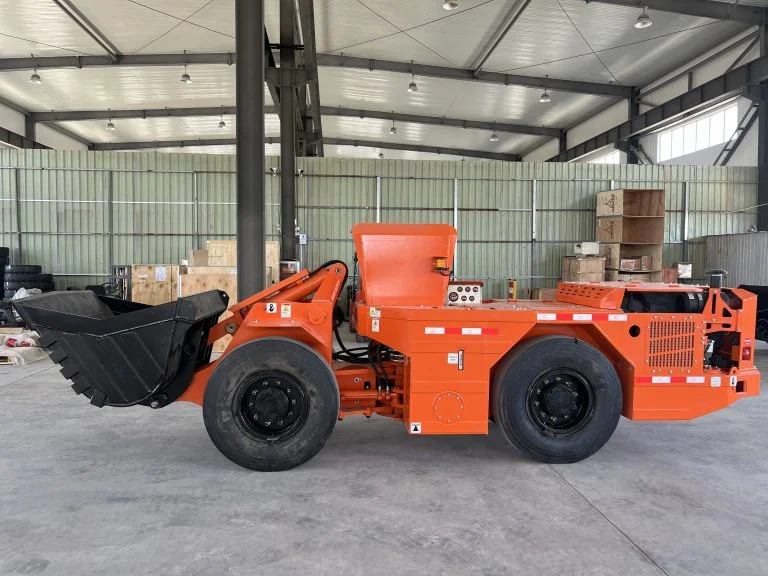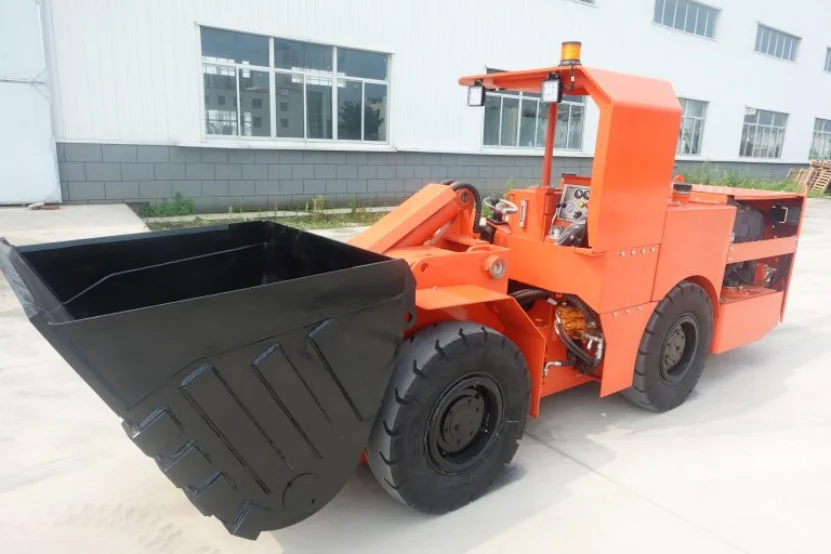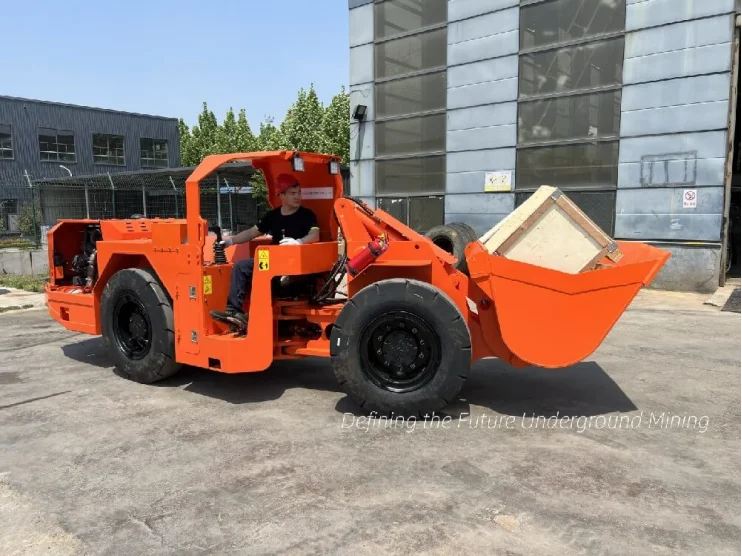The Current State of Underground Mine Trucks
Overview of Diesel-Powered Underground Mine Trucks
Diesel-driven underground haulage vehicles have served as critical infrastructure in mining operations for over half a century. Renowned for their robust construction and substantial load capacities, these machines thrive in demanding subterranean conditions. The mechanical advantage of diesel engines enables efficient traversal of steep inclines and transportation of heavy materials. Take, for example, Yantai Chi Hong Machinery Co., Ltd.’s CHUK-15 and CHUK-20 models, engineered to handle payloads of 15 and 20 metric tons. All underground haulers from this manufacturer are optimized for full-load operation at elevated velocities along extended spiral pathways with gradients reaching 20%. Such capabilities render them irreplaceable in scenarios demanding unwavering reliability.
Yet diesel-powered units carry notable disadvantages. Emission outputs and running expenses remain persistent concerns. Dependence on hydrocarbon fuels exacerbates environmental challenges, while recurring fuel and upkeep costs accumulate substantially across operational lifespans. Furthermore, underground ventilation systems must compensate for exhaust emissions, amplifying operational overheads.
Introduction to Electric Underground Mine Trucks
Electrically propelled mine trucks signify a paradigm shift toward eco-efficient mineral extraction. By utilizing electric drive systems, these vehicles eliminate fossil fuel dependency while dramatically curtailing greenhouse gas outputs. Consider Yantai Chi Hong Machinery Co., Ltd.’s WJD-4 electric loader, which produces no exhaust emissions and integrates advanced safety mechanisms like multi-point grounding and leakage detection. Its energy-efficient motor technology ensures zero-emission operation.
Compared to diesel equivalents, electric variants generate less noise pollution, enhancing operator comfort. Contemporary designs frequently incorporate smart diagnostic interfaces that streamline maintenance workflows. Though initial procurement costs exceed traditional options, lifecycle advantages position electric trucks as compelling investments for progressive mining enterprises.
Key Differences Between Electric and Diesel Underground Mine Trucks
Performance Capabilities and Efficiency Comparison
In raw power metrics, diesel trucks historically dominate payload capacities. The CHUK-30 model exemplifies this strength, balancing heavy load capacities with agile maneuvering in restricted tunnels. However, electric counterparts are narrowing this gap through motor innovation. Yantai Chi Hong Machinery Co., Ltd.’s WJD-6 loader exemplifies this progress, featuring a 132KW drive unit that generates 270KN of tractive force.
Efficiency metrics reveal electric superiority. Battery-powered systems demonstrate superior energy conversion ratios, reducing kilowatt-hour consumption per ton transported. Operational continuity improves through strategically positioned charging stations, eliminating refueling interruptions.
Environmental Impact: Emissions and Sustainability
Ecological considerations grow increasingly urgent as industries pursue sustainable practices. Diesel units discharge substantial CO₂ and particulate matter, mandating complex ventilation infrastructure that inflates both environmental burdens and operating budgets.
Electric alternatives eliminate tailpipe emissions, simultaneously shrinking carbon footprints and enhancing underground air quality. The electric LHD (Load-Haul-Dump) system exemplifies this advancement, boosting productivity while minimizing ecological disruption. With tightening global emission regulations, electrification transitions from optional upgrade to operational necessity.
Cost Analysis: Initial Investment vs. Long-Term Savings
Financial evaluations uncover contrasting cost dynamics. Diesel trucks present lower upfront costs but accrue higher lifetime expenses from fuel expenditures, component replacements, and ventilation demands.
Electric variants demand greater initial capital but yield operational savings through reduced energy bills and simplified maintenance. Simplified drivetrains—lacking combustion engines—experience fewer mechanical failures. Governmental incentives for green technology adoption further offset initial outlays, enhancing fiscal viability.
Opportunities for Electric Underground Mine Trucks to Outperform Diesel Models
Meeting Global Sustainability Goals and Regulations
Mining operators face mounting pressure to comply with international sustainability frameworks. Diesel equipment’s emission profiles conflict with these objectives, whereas electric alternatives like Yantai Chi Hong Machinery Co., Ltd.’s WJD-4 align perfectly. Its emission-free operation and integrated safety protocols satisfy regulatory demands while supporting corporate ESG (Environmental, Social, Governance) commitments.
Electrification synergizes with renewable energy adoption trends. As solar/wind infrastructure expands, mines can power electric fleets using clean energy, amplifying sustainability gains and stakeholder confidence.
Reducing Operational Costs in Mining Operations
Cost-efficiency remains paramount in mineral extraction. Diesel systems hemorrhage funds through volatile fuel pricing and intricate maintenance schedules. Electric drivetrains slash these expenses via simplified mechanics and predictable energy costs.
Battery technology breakthroughs address historical range limitations. On-site charging stations integrate smoothly into existing workflows, minimizing transition disruptions. Though initial investments appear steep, tax rebates and subsidies frequently bridge cost gaps.
Predictions for the Future of Underground Mining Equipment
Market Trends Favoring Electric Vehicles in Mining
The subterranean equipment sector undergoes radical transformation, driven by ecological imperatives and technological leaps. Electric truck demand will likely surge as solid-state batteries enable faster charging and extended service lives. Yantai Chi Hong Machinery Co., Ltd.’s WJD-6—with its 270KN traction motor—epitomizes this performance parity with diesel rivals.
Automation represents another transformative force. Electric platforms increasingly feature remote diagnostics and predictive maintenance algorithms, boosting efficiency while reducing personnel exposure to hazardous environments.
Potential Impact on the Global Mining Industry
Electrification’s ripple effects will reshape mining economics. Large-scale projects could reallocate savings from reduced fuel/maintenance budgets toward exploration and development.
Workplace health metrics will improve through cleaner air and quieter operations. Yantai Chi Hong Machinery Co., Ltd.’s silent, zero-emission loaders exemplify this dual benefit. Regulatory foresight suggests early adopters will gain competitive advantages as emission standards tighten globally.
Frequently Asked Questions (FAQs)
What operational benefits do electric mine trucks provide?
Zero emissions, reduced energy expenditures, and minimized noise pollution distinguish electric models from diesel counterparts.
What challenges accompany electric truck adoption?
Higher upfront costs and charging infrastructure requirements pose initial barriers, offset by long-term savings.
How do battery advancements affect electric trucks?
Improved energy density and charging speeds enhance viability, enabling performance parity with traditional systems.
Why is automation significant for modern mining gear?
Smart diagnostics enable proactive maintenance and safer operations through reduced human intervention.
Discover how Yantai Chi Hong Machinery Co., Ltd.’s tailored engineering solutions can revolutionize your underground workflows. Contact our team today to explore cutting-edge equipment designed for 21st-century mining challenges.



